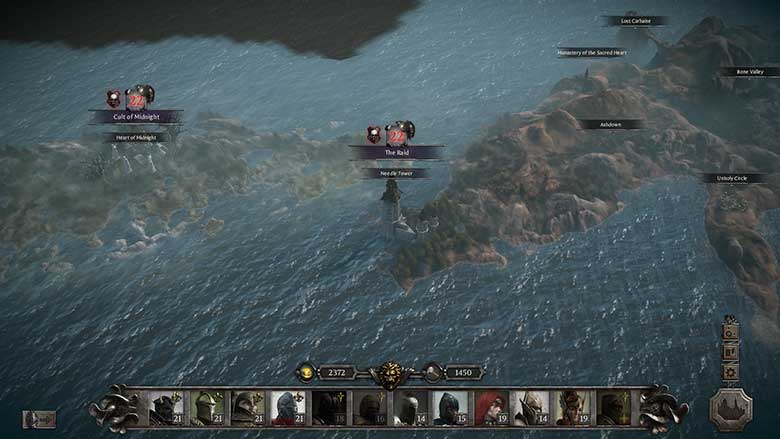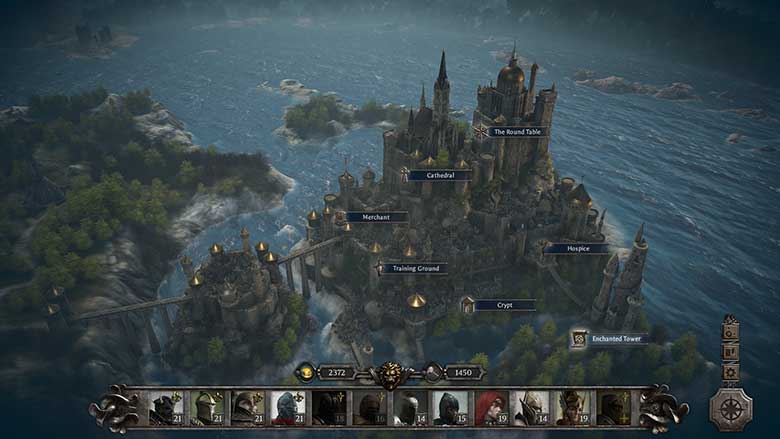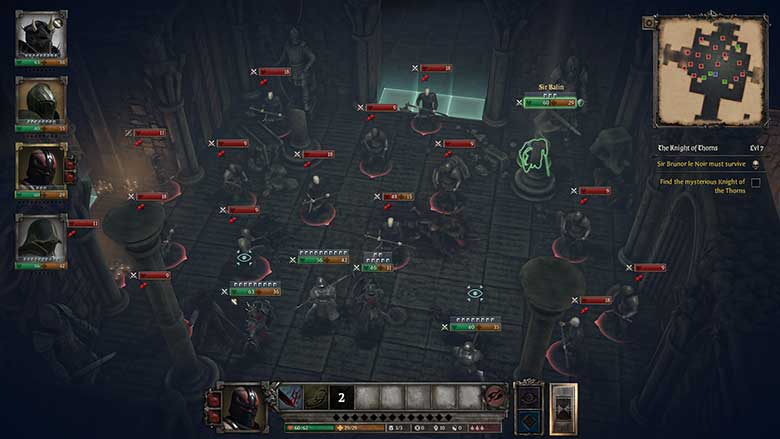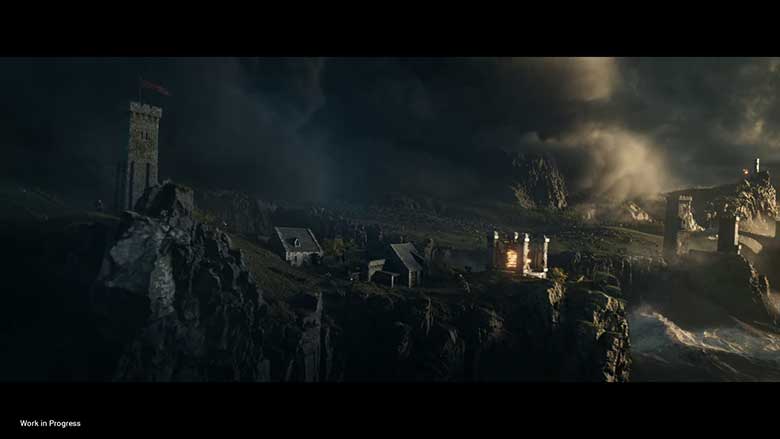King Arthur: Knight’s Tale Review

Official Score
Overall - 85%
85%
King Arthur: Knight's Tale boasts a deep and engaging combat system that is as rewarding as it is ruthless. A worthwhile adventure into Arthurian Legend, it's a fantastic entry into the tactical RPG space that unfortunately begins to suffer with technical issues as the story unfolds. As many of the cutscenes tell you, it's a work in progress.
NeocoreGames’ bold new entry into the tactical RPG space sees the world of Arthurian legend come to life. The Knights of the Round Table look to reclaim Avalon at the behest of the Lady of the Lake with the release of King Arthur: Knight’s Tale.
The world of King Arthur and the famous knights is one seldom explored in the gaming space, so to say I was excited to jump in would be an understatement. While the game does suffer from the leftover woes of Early Access, it’s a fantastic entry into the tactical RPG genre.
King Arthur: Knight’s Tale Review
[line style=’solid’ top=’10’ bottom=’10’ width=’100%’ height=’1′ color=’blue’]King Arthur: Knight’s Tale takes place after an epic battle between King Arthur and Mordred. Both fell in battle and arrived in Avalon, as the Lady of the Lake looked to bring them both back from the brink. You play as Mordred, a rather angry and aggressive knight considering the game’s open-ended morality system. The story follows Mordred and his Round Table knights as they embark on an adventure to finish King Arthur once and for all.
At its core, King Arthur: Knight’s Tale is a combat-centric tactical RPG with minor elements of “city” management thrown in the mix. The game is divided into two main aspects: completing combat-heavy missions and managing Camelot.
The mission structure is somewhat lacking in imagination; it’s a series of identical objectives with varying enemies and combat challenges. In any other genre, this would struggle but the depth, variety, and unbridled satisfaction from each and every combat encounter keep this tactical beast exciting from start to finish. The tactical combat is divided into two turns: your team, and the enemy team. Each character has a movement allowance and ability allowance, with no specific order enforced. You can move one character into position to buff another, launch an attack with a second character, and then retreat again with the first. While a simple concept, it creates a truly challenging combat environment that’s a hell of a lot of fun.
Lady Guinevere, Sir Balin, Sir Galahad, Sir Lancelot – I found over 30 unique characters throughout the entire game. Each character belongs to one of several classes, but most have at least one unique ability or a combination of abilities not available to other characters within that class. By the time I had finished the story, Sir Lancelot had become my numero uno. He hits like a truck and after I equipped him with a number of powerful Relic items, he was speeding around the battlefield taking down five to six enemies in a single turn.
Each class plays entirely differently and bringing the right combination of classes for any given challenge is vital if you want to succeed. For much of the game I was using Sir Balin, a Vanguard unit that specializes in stealth, attacking enemies from the rear with explosive consequences. This worked great – for a while. I soon encountered enemies with unique abilities that revealed units in stealth. The same can be said for much of the games other classes. Heavily armored characters, such as Sir Mordred himself, function great in regular combat but really struggle when heavy armor piercing units enter the fray.
Defeating enemies and completing quests earns you loot and, sometimes, new characters. Loot is purely mechanical; it does not alter the appearance of any of the knights in the game. However, there are a ton of different characters available so while on the surface it may seem shallow, the constant switching of characters and the overall power level of the items you find, there’s near endless combinations of characters and equipment. The lack of visual upgrades is quite often a deal-breaker for me but until writing this review, it never once occurred to me after the initial discovery.
It captures that rogue-like adrenaline surge each and every encounter. You’ve found a new favorite hero, decked them out in all your best gear, but there’s always that chance. On nearly all difficulties (bar one), King Arthur: Knight’s Tale has permanent death mechanics. If your character dies in combat, there’s a good chance they are dead-dead. I did find a single item to revive a single hero but I often found myself reloading after several, uh, mishaps, to avoid losing Merlin. He summons a dragon, okay?
Managing Camelot, while engaging and rewarding early on, it doesn’t boast the same depth and attention to detail as the combat. You need to carefully manage the health and injuries of your heroes, pass laws and decrees, and have somewhere to buy and sell items. It’s all very expected, but once I had the core elements in place, I didn’t often find myself worrying too much about the minor upgrades. It’s a worthwhile part of the game but a lot of the options are tied to the morality system, which offers lots of replay value but also limits features and characters for any given playthrough.
Various choices, big and small, can influence Sir Mordred’s morale compass, but the struggle to make sense of the system reaches far beyond a simple internal struggle for Mordred himself. I chose to go down the Rightful path with Christianity, but you can also go any combination of those, and Tyrant or Old Faith. Mechanically, it’s sound, you get different characters and unlocks for the different paths but Mordred himself remains very much the same regardless of the choices you make. Some of the choices do leave a lasting impact, such as killing off characters. Despite this, most are an illusion with minimal ramifications in the story itself.
King Arthur: Knight’s Tale did enjoy some time in Early Access, with players able to explore some of the earlier parts of the game. The first couple of acts are fantastic, well polished, and technically flawless. However, as you venture beyond the restraints imposed by the Early Access limitations, it becomes a bit of a technical gamble. Some of the missions and maps suffer with FPS to the point of it being nearly unplayable, and the latter cutscenes lack any facial animations and lip syncing. Certain abilities and moves lack any sound effects. It was a disappointing finish to an otherwise fantastic tactical RPG.
King Arthur: Knight’s Tale boasts a deep and engaging combat system that is as rewarding as it is ruthless. A worthwhile adventure into Arthurian Legend, it’s a fantastic entry into the tactical RPG space that unfortunately begins to suffer with technical issues as the story unfolds. As many of the cutscenes tell you, it’s a work in progress.
[infobox style=’success’ static=’1′]This review of King Arthur: Knight’s Tale was done on the PC. A digital code was provided by the publisher.[/infobox][blogger ids=” cat=’honest-game-reviews’ orderby=’date’ order=’desc’ count=’4′ descr=’200′ readmore=’1′ rating=’1′ style=’image_large’ border=’0′ dir=’vertical’]



